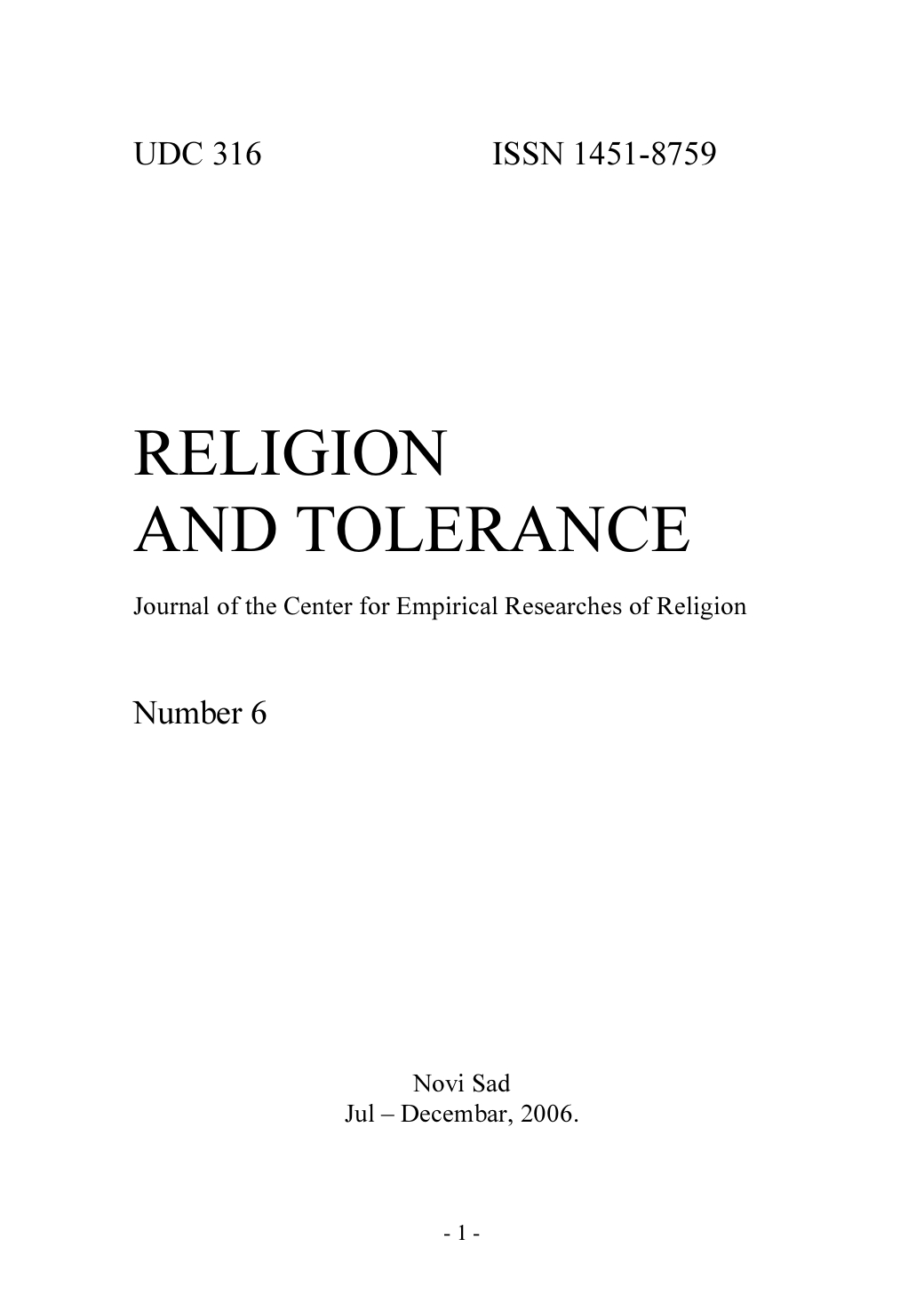
We kindly inform you that, as long as the subject affiliation of our 300.000+ articles is in progress, you might get unsufficient or no results on your third level or second level search. In this case, please broaden your search criteria.



This article aims to make a brief analysis related to the exchange of cryptoassets, covering the maintenance of the security system, their acquisition and their storage. The article discusses the “over-the-counter” trading of crypto-assets, as well as their acquisition through trading on the exchange. Particular attention is paid to the deposit of cryptoassets on the exchange and the risks associated with “hacking” and/or its bankruptcy. The possibilities for compensation in these cases are indicated. The rules for exchanging crypto assets in Europe with the adoption of the MiCA regulation on 31.05.2023, which completely changes the situation with the crypto market at the European level, are briefly stated. The second part of the article discusses the so-called Bitcoin “forks” related to the change in the set of rules of the original software (Blockchain) to develop a new version of it (new Blockchain). A brief definition of the existing types of “forks” is given.
More...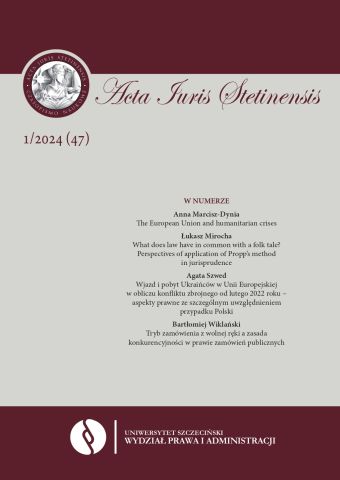
The aim and objective of this study is to outline the evolution and mechanisms of humanitarian aid provided by the European Union. Unquestionably, this is a significant issue, which, however, only found a direct legal basis in the Treaty of Lisbon, referring to humanitarian aid, and became the subject of a separate policy. Its principles, structure, and mechanisms of financing were clarified through the unification and harmonization of acts of secondary law. This also includes sui generis acts, which had a specific impact on the area of external actions in the discussed aspect. The fundamental goal of this study is to present the legal and political framework of humanitarian aid along with examples regarding practical aspects of providing assistance. The study employs the method of investigation of the law in force and legal comparison, consisting in, e.g., an attempt to find adequate legal solutions for broadly understood humanitarian aid provided by the European Union.
More...
This study aims to present to the readers the achievements of Russian literary scholar Vladimir Propp and to analyse the possibility of applying them in jurisprudence. Propp researched literary pieces from the magical tale genre and came to a conclusion that their plot is composed of 31 repeating functions performed by 7 types of characters. Propp showed that despite variations in the names of actions, characters and superficial attributes in various folk tales, the deep level of the text of these works allowed readers to notice some identical elements between them. Propp’s major work - Morphology of the Folktale, together with anthropologist Claud Lévi-Strauss’s thought and the findings made by Noam Chomsky became an inspiration for the development of the French school of structuralism and narratological research. The discussion presented in this article fits the research realm called law and literature, especially its narratological branch. This study presents a synthetic elaboration on the state of the art of research on legal narratology and possible application and limitations of Propp’s thought in this field. This work does not rely on the analysis of the law in force, thereby a reference to such a method or a reference to the historical development of relevant law is unnecessary here. Instead, discourse analysis plays the pivotal role in this article. This paper points out that given the differences that occur between law and literature, Propp’s achievements may primarily play the role of inspiration for jurisprudence, though there are realms in which Propp’s method may be applied directly.
More...
This study addresses the functioning of the single-source public procurement procedure in the current legal order in terms of its compliance with the essence of the principle of competition. The main purpose of this work is to verify the following thesis: single-source procurement as a classical procurement procedure is a procedure that contradicts the essence of public procurement. For this purpose, the study is divided into six sub-sections. The introduction to the topic presents a short description of the discussed procedure of awarding a public contract. Then, the thesis and antithesis related to the topic of the discussion are presented. Subsequently, a polemic with the thesis and antithesis presented in the introduction is conducted. The paper closes with a summary containing the answer to the problems raised in the article. The research methodology used in the work is the analysis of literature and jurisprudence in the field of public procurement, in particular regarding the procedure of single-source procurement. This analysis allows the identification of a number of problems related to maintaining the principle of competition.
More...



The paper represents a quantitative and a qualitative analysis of attitudes of citizens of Bosnia and Herzegovina towards animals and their socio-cultural status in society. On the one hand, the research targets general population, with a view to determining dominant approaches by means of which the animal part of society is perceived, whereas, on the other hand, the animal advocacy on the part of individuals operating within and outside animal protection associations is analysed, in order to map out the theme and set out directions of public communication in Bosnia and Herzegovina as regards animals and their rights. For that reason, the author focuses on animal advocacy studies as a separate scholarly discipline, which is concerned with animals as active participants of social and cultural life. In order to oppose classic, exclusively academic, studies in the field, there have been critical animal studies introduced, more activist in their nature, since their field of interest goes beyond a theoretical and academic discourse as it deals with policy makers and activism directed towards liberating animals. The data has been gathered by virtue of general population survey method and of semi-structured interview engaging prominent individuals recognised as promoters of animal protection. This particularisation of animal advocacy has enabled us, by means of ‘a direct activist voice’ (Marjanic, 2014), to view the motives of their engagement on the social media, which range from personal actions, over advocating for the cause, to setting up various civic organisations (Altar et al, 2007).
More...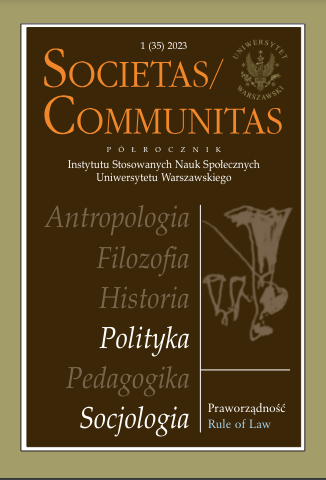
The paper focuses on discussing the results of research on legalism. The research was conducted in the years 1996, 2007, 2009, 2020 and 2022 on a Polish representative sample. The results show a systematic increase in the frequency of declarations of legalism. Legalism is the basis for the efficient functioning of modern liberal democracy. However, in a der Doppelstaat (Dual State) situation, it is necessary to ask to which legal order legalism applies.
More...
The article presents the results of a survey on the punitiveness of Polish society, commissioned by the Institute of Justice in Poland. Punitiveness was measured using several indicators, including in regard to the introduction of penalties such as life imprisonment without parole or the death penalty into the Penal Code. The same indicators were used to measure punitiveness in studies conducted in previous years. This enabled a comparison of the results, which showed that the respondents in the most recent surveys were less punitive although this may be related not so much to an actual change in societal attitudes as to different methodology used in the studies. The research also made it possible to analyse the factors determining this intensity, e.g. the strength of the relationship between socio-demographic factors and punitiveness. However, the analysis did not reveal a direct relationship between these dependencies.
More...
This article develops the conceptual idea that for successful regulation of labor relations, a clear and objective mechanism for information security of the process is needed, which leads to an advantage over the environment, to improvement of regulation function of the state to the public need and to increase of the social security in society.
More...
The article is a contribution to the doctrinal discussion, the subject of which, since the Second Vatican Council, has been the participation of the lay faithful in the Church’s governing authority. In addition to the theories of power present in the doctrine, the author points to the concept of presumed power, understanding it as a possible solution to the problems and controversies that have accumulated over the years. The recent amendment to the law on the Roman Curia seems to confirm the intuition of the proposed theory of potestas a munere, which is further strengthened by some events documenting the entrustment of some important Church offices to lay faithful.
More...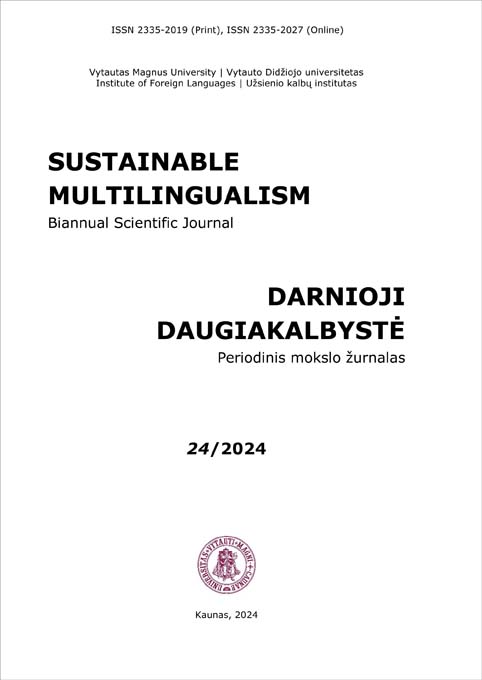
Over the past few decades, increasing attention has been devoted towards the study of formulaic language, both in Lithuania and abroad. It is assumed that stable word combinations, rather than single words, are preferred in speaking and translating processes, which makes this study increasingly relevant. The idea of formulaic language is well reflected by light verb constructions as one of the collocation types, therefore this article aims to describe the use of these constructions in the analytic Spanish language. The article provides a theoretical overview of light verb constructions, their identification using the “Sketch Engine” computer program, and their usage in a representative-size corpus, compiled from the EUR-Lex database of documents from the original Spanish texts of the Advocate General’s Opinions of the Court of Justice of the European Union. The analysis of the use of Spanish light verb constructions in the analyzed text provided large objective data on their use, revealing the light verb constructions and their patterns typical to administrative Spanish. It has been found that the grammatical meaning of these light verb constructions is mostly represented by the following support verbs: “tener”, “poner”, “dar”, “tomar’ and hacer”. In combinations with nouns, these support verbs mark grammatical aspects such as mood, tense, person, and number. The frequent repetition of light verb constructions in the corpus indicates a standardized lexicon within the Spanish administrative language. In general, the high number of light verb constructions in the corpus reveals their importance in analytic Spanish, especially in the administrative legal language of the Advocate General‘s opinions.
More...
Opinions of those groups that the legislation will affect, play a key role in the so-called „smart legislature“. If we want the regulations to fit to which it applies, it is necessary to achieve the highest possible quality of communication between the stakeholders of the process. This overview paper aims to provide an overview of scientific knowledge and works published in the period from 2017 to 2023 in renowned scientific journals or databases, and to explain the role of the media in the process of consulting the public, while using the method of systematic literature analysis, as well as the Frederiksen/Phelps method. The aforementioned findings are important in terms of supplementing the existing scientific literature and forming future guidelines with the aim of developing a model through which the medium that will play the most significant role in the quality of the counselling process will be chosen. In further research, it is necessary to carry out detailed analyses of relationships of the mentioned factors.
More...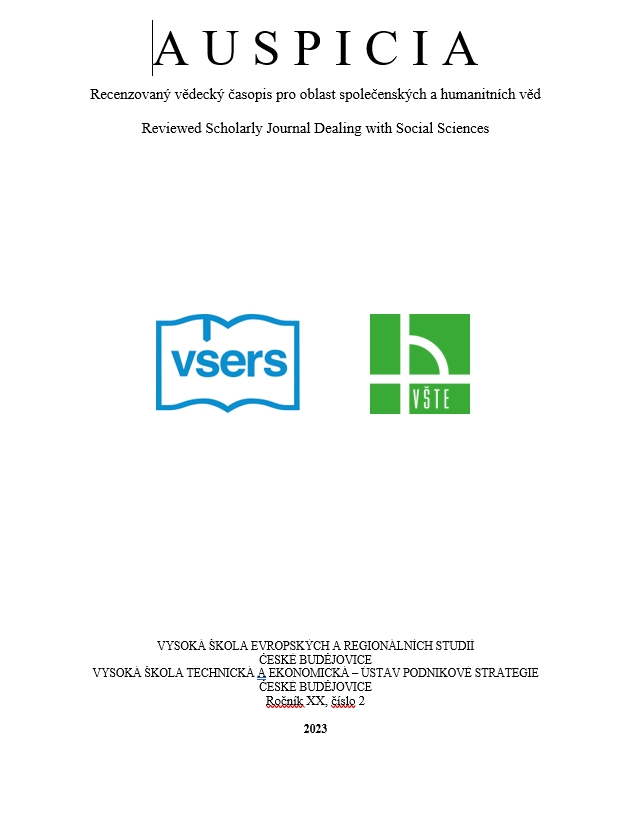
Although the Czech Republic usually spends a smaller share of GDP on health care compared to developed European countries, as shown by the results of expert studies and publicly available statistical data, in 2020 public spending on health care in the Czech Republic became the highest in the EU together with Austria. The aim of the paper is to assess the development of the financing of the Czech health system from public health insurance funds from 2010 to 2022. In assessing the development of financing, attention is paid to the revenues and expenditures of public health insurance companies in the Czech Republic and the factors that influence the level of revenues and expenditures of public health insurance companies. The paper concludes with a warning about the steady increase in the expenditure of public health insurers in the context of the prevailing deficit management, deepened by the impact of the Covid-19 pandemic
More...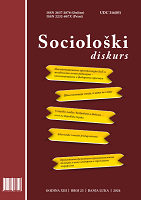
The role of the police in protecting the rights and freedoms of citizens represents a special challenge. In order to uphold the rule of law in a democratic society, those entrusted with preserving order in society must also be held accountable to the law. Every day, police officers are human rights defenders in the truest sense of the word, but in order to fulfill their duties and tasks they often have to violate the rights of those whose actions violate the rights of others. The challenge of striking the necessary balance between police powers and the rights and freedoms of citizens is not new. It is often expressed in terms of accountability, legitimately raising the age-old question – who will watch the watchmen? The subject of this paper is to clarify the relationship of the police to their powers in terms of determining what the police can and cannot do. The aim of the paper is to highlight that only lawful exercise of police powers is correct and only if police officers apply them in that way they will not be under scrutiny for accountability, at the same time creating a positive attitude among citizens towards the police as an organization.
More...
The role of the police in protecting the rights and freedoms of citizens represents a special challenge. In order to uphold the rule of law in a democratic society, those entrusted with preserving order in society must also be held accountable to the law. Every day, police officers are human rights defenders in the truest sense of the word, but in order to fulfill their duties and tasks they often have to violate the rights of those whose actions violate the rights of others. The challenge of striking the necessary balance between police powers and the rights and freedoms of citizens is not new. It is often expressed in terms of accountability, legitimately raising the age-old question – who will watch the watchmen? The subject of this paper is to clarify the relationship of the police to their powers in terms of determining what the police can and cannot do. The aim of the paper is to highlight that only lawful exercise of police powers is correct and only if police officers apply them in that way they will not be under scrutiny for accountability, at the same time creating a positive attitude among citizens towards the police as an organization.
More...
In this scientific work, we discussed the punishments in the Salian Law and the types of punishments that were foreseen in case of violence against weak persons, primarily women (and children). Consequently, we analyzed four articles of this law - XIII, XX, XXIV and XXV, on the basis of which we pointed out that women, compared to men, were less often perpetrators of criminal acts, and often the law was on their side, looking at them more as victims, which led to the fact that the fines for murdering a child, raping, abducting or injuring a woman were far higher than for some other crimes. It is important to emphasize that the crimes of that time, as well as the punishments that were foreseen for them, when it comes to the above-mentioned categories of the population, should be viewed in the spirit of that time. However, looking from today’s point of view, how people lived in the early Middle Ages, it can be concluded that “barbarian” peoples, in their laws, often cruelly “reckoned” with numerous crimes. The punishments prescribed for “offences”, which we pointed out in this scientific work, were mostly monetary and corporal, but in some cases the offender could also be punished with the death penalty. The purpose of all these punishments was to compensate the injured person for the damage, loss or pain, and to properly punish the perpetrator of the crime, but this is where we already see the class inequality of the population. More precisely, it is noticeable that free people were punished differently for the same crime, as opposed to non-free people, and the disproportion between the prescribed punishment and the criminal offense is also noticeable. In addition, the question arises as to how much, in general, the Germanic tribes respected their laws, more precisely, whether they were literally applied, and whether the prescribed punishments, for various offenses, had their purpose. Also, it was taken into account the circumstances under which a certain case “took place”, and the intention of the perpetrator of the crime was also important, i.e. whether he committed the crime by accident or with premeditation, which certainly affected the type and degree of punishment. One thing is absolutely certain, and that is that an attempt was made to preserve peace among the Franks with monetary, corporal and death punishments, that is, the mentioned punishments had, primarily, a preventive character, in the sense of additionally intimidating the population, which would prevent or reduce potential criminal acts, but also, on the other hand, the amount of the prescribed penalties led to a further process of differentiation of the population.
More...